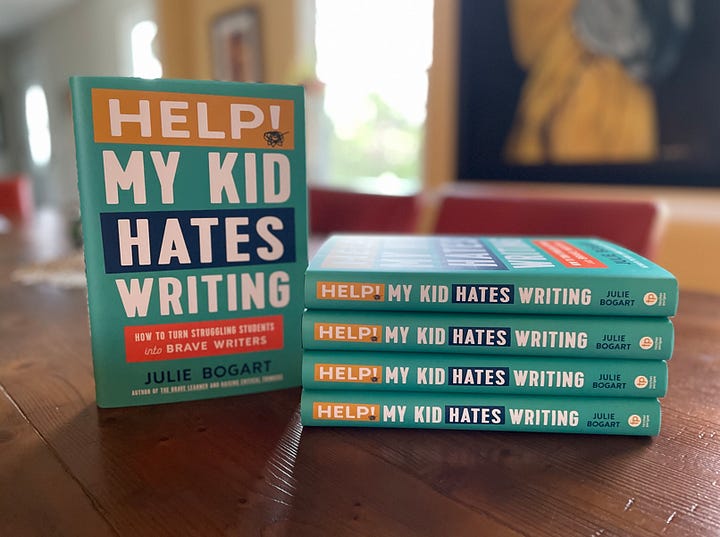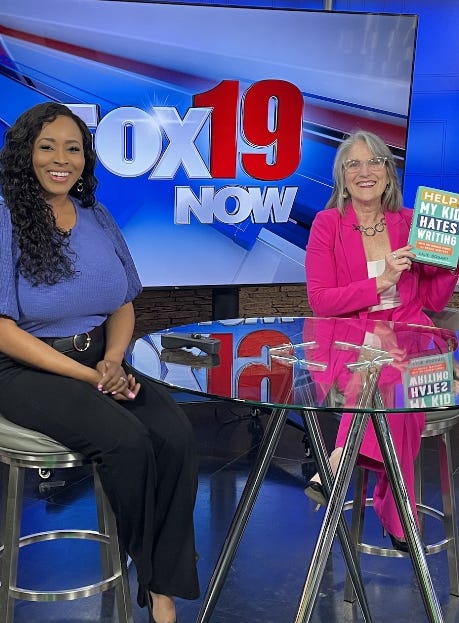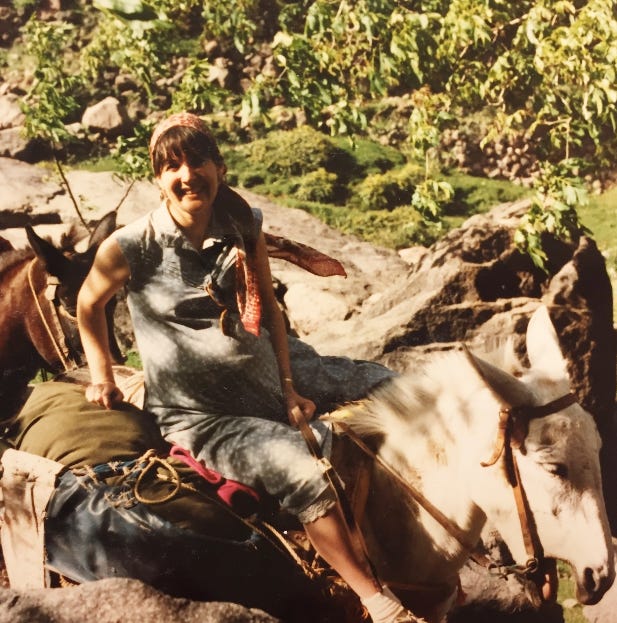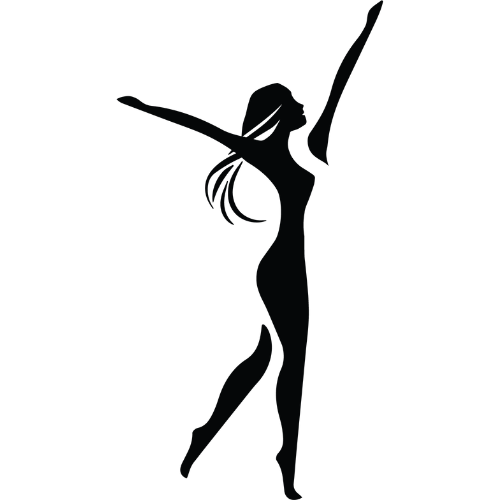In Her Words: Julie Bogart, Brave Writer, Educator, and Entrepreneur
Taking the mystery out of teaching writing and making it accessible by valuing ideas and empowering students
When I started homeschooling my children, I was also a freelance writer. I didn’t make a lot of money, but I was writing. I spent probably three hours a week working on my career, submitting articles and picture books. I didn’t have a ton of publishing experience, but I was honing my own craft. At one point, someone approached my (ex) husband, Jon, who was a literature and composition teacher, and said “I have this side gig where I edit people’s doctoral dissertations before they go into their defense, but I can’t do it anymore. Do you want to do it?” Jon said he didn’t have time. When I heard about it, I said “Well, I can do that,” and John asked me why I thought so. I said, “I don’t know. I just know I can. I’m a good writer. I’m a good thinker. I know I can do it. And I was right. My husband was stunned. Sometimes you’re just good at something. I was good at academic writing.
Later, my husband switched from teaching to working in our religious denomination’s headquarters. The head of the denomination knew I had a freelance writing background, so he asked me to run the quarterly publication, which was basically a magazine. In my role as the publication’s editor, part of what I was doing was coaching adults in writing. Because the boss liked what I was doing so well, I became his ghost writer, which meant I was taking sermons and conversations and turning them into books in his name.
Then one day, a friend of mine, who was a fellow homeschool mom said, “I don’t understand why my kids hate writing. I need help. What program are you using?” And I thought, I’m just going to my bookshelves, and pulling down the books I use as a professional writer to help me teach. “Why don’t you show me the curriculum you’re using?” I said to her. The first lesson she shared was how to write a descriptive paragraph. There was a sample paragraph and a bunch of instructions. I read the sample and then I looked at my friend and I said, “Glenda, what did you think of this sample paragraph? When you got to the end of it, did you think: gosh, I wish there were a second paragraph?”


Often the way school teaches writing has nothing to do with good writing. It’s about mechanics. It’s about format. It’s about getting the spelling and punctuation correct. Many kids are given “A’s” on writing that nobody wants to read. It was at that moment that I realized parents didn’t understand what writing was. They just thought it was a school subject. They were teaching writing like this disembodied topic over on a shelf, not connected to the vivid, living internal life of a child, which is what writing is really all about.
I started sharing what I knew about writing, and the next thing you know, I got to speak at some events, and then I started discussing on discussion boards. (This is late 1990’s when the internet was young.) By ‘99 I had gathered a group of 40 families online. I started writing a manual called The Writer’s Jungle, and I asked for feedback in exchange for teaching support and advice and that’s how I launched my business in January of 2000. I also credit my ex-husband. We used to say we were boring at dinner parties because we would talk about paragraph structure, and we thought that was interesting. He was a literature and composition teacher, and I had access to his books. He taught himself PageMaker to lay out my first book. Without him, I don’t know if I’d have Brave Writer, because I don’t think I had the technical hunger and confidence that he had. But very quickly, I developed online classes and curricula, and I read The E Myth, which talked about duplicating yourself. I think I read it in the first month of my business. Two months in, I hired my first person. And you should laugh about that, because I was making about $400 a month at the time. I realized if I’m the only one teaching classes, there’s no way I’ll ever grow. So, I immediately trained someone and duplicated myself.
Ten years later, I went through a divorce. One big challenge I faced was going from two incomes down to one. It felt like a financial hurdle. I remember visiting the website wife.org. They have an offering called Second Saturday Workshops where they advise divorcing women how to manage their finances. I sat down with a planner who really helped me look at my current situation and gave me a plan along with reassurance that I was going to be okay. That year, I took out a loan (for the first time!) to help me fund building a classroom for my company. In two years’ time, I was back on my feet and paid off the loan. It turned out that once I had moved past the pain of divorce, I had fresh energy for my work. It was good to experience that.
The book that I’m about to release (Help! My Kid Hates Writing: How to Turn Struggling Students into Brave Writers) is the culmination of that 25-year project of discovering what it takes to free the writer inside of a child. How do we help them tap into their living language, their vivid insights, their creative and quirky senses of humor, their ability to narrate and describe? How do we tap into that in a way that a child finds meaningful? I always say, “You don’t have to love writing. I would settle for not hating it.”
What I’ve noticed about the kids who graduate from our program and go on into adulthood is that they just feel comfortable writing. I say our goal is competence and confidence. I want the blank page to not be intimidating. I want people who marry to write their own wedding vows. There was a whole TikTok trend where women in heterosexual marriages were angry that their husbands were using ChatGPT to write wedding vows. Well, they’re writing them with ChatGPT because they don’t have writing confidence. They don’t feel like their own self-expression is good enough for this very high stakes moment. What if we give kids the feeling of empowerment that their thoughts matter? They’d be much more likely to rely on their own thoughts in those tender moments.
ChatGPT is actually exposing the failure of education to successfully motivate people to learn. In high school and especially college, kids are in a triage of how they use their time, and they know that. They’re going to write a paper that they don’t care about for a class they don’t care about for a teacher who’s just going to critique it. It’s a lot less vulnerable to just go get a facsimile from an AI bot of what the teacher wants than it is to pour yourself into a paper and then have it treated like it’s something nobody cared about. It’s even worse in college, because now scholarships are tied to GPAs. If you’re a smart student, your goal is to keep that “A” so you can keep the money. So, of course, you’re going to rely on AI. Why would you rely on yourself and take the risk?
Your previous book was about critical thinking, and that came out at a really key point in our society. Can you talk a bit about your inspiration for it?
Raising Critical Thinkers: A Parent’s Guide to Growing Wise Kids in the Digital Age is a favorite of mine. I’ve always been interested in meaning making and interpretation. I have been on a constant search asking: “How do you know what’s true?” That’s such a big question for me, and as I got into my 40s, it just became even more important, politically, spiritually, and relationally in my marriage. This book is the fruit of a long, dedicated process to understanding my beliefs and values and what it took to revise them. I spent several years in research as well and put together what I think is an essential guide to support parents in teaching these skills to their kids and even to themselves.
To me, critical thinking starts with taking what I call the academic selfie. You flip the camera lens around and you look at your own way of seeing the world and why you see it that way, and what the limits are to even how you understand things. I crack up at how many people have decided opinions in fields where they have zero training. If you’re asking me about the pedagogy of writing, now I’m standing on some authority. Now I’ve got a lot to say, and I feel like my opinion on that should be decided. It shouldn't be ambiguous or hopeful. Knowing those differences for myself and for others creates a lot more nuance in my relationships to people, to subject matter, to my identity as a citizen, as a woman, and as a human being.
What advice would you give your 25-year-old self?
It’s funny that you brought up age 25 because over the weekend, I was putting together a little slideshow for Instagram, and it starts with me at age 25. At that age, I was living in Morocco, I was married, and I was pregnant with my first child. My son was born in June 1987. In May 1987, I went on a donkey trek in the High Atlas Mountains for a week. There’s a picture of me pregnant on this donkey walking on the edges of cliffs. I was wearing Blessed Mother blue, fully pregnant, riding on a donkey. I literally looked like Mary. I had a scarf on my head. It was really quite impressive. This is before cell phones. There was no mode of transportation that was going to get me out of there very quickly. Huge risk. I told my midwife, “I really want to go on this because if I don’t go, I don’t think I’ll ever get to. But I know I’m close to giving birth.” She says, “Oh, don’t worry, Julie, if the baby comes that easily, you don’t need me.” She went on to say, “Those people are delivering sheep and goats every day; they’ll know how to help you.” At the time, my husband was working in a university, and he couldn’t take time off.
When you’re young, you make decisions with whatever information you have. I made the most sincere decision for my life at the time. My decisions were motivated by the idea of making a meaningful difference in the world. Now, in hindsight, I don’t agree with the difference I was trying to make. But for a 25-year-old, I think she did a pretty good job. I respect her. I think it was a good decision to live abroad. I think that’s always a wise decision. I think you grow so much. But I wish that I had had a wider lens for how I understood my worldview and my religious beliefs at the time.
What advice would your 25-year-old self have for you today?
If I look forward from the age of 25 to my future self, I would say not to forget to be that person who was that brave.
Belle Curve Stories is about women navigating life with grit, grace and growth. What do those three words mean to you?
Grit has a lot to do with identity. It means having tenacity to hang on to yourself and not give it away. I spent years where I gave something of myself away, believing that it would be returned if I was selfless and showed myself as being full of integrity. I thought it would get mirrored. Really, I needed to have more grit, kind of what I started with, and maybe what I’ve ended up with. To me it’s tenacity.
Grace is realizing that you can only do what you know how to do at any given moment. Ultimately, we don’t have the level of control we believe we have over our own lives. There are so many intersecting, sliding doors moments where you could have said yes or no to one or another opportunity. I was thinking the other day, I wish I had chosen Paris instead of Montpellier for my study abroad program, but it was Montpellier that led me on the path to my marriage, to my kids, to Morocco, to who I am today. So, it was a sliding glass doors moment. Who knows where Paris would have taken me? Some other place that might have been a wonderful place too. Grace is recognizing that the path you took was meaningful and was good for you. It doesn’t necessarily mean that it was wrong, just because you have questions about it now.
Growth, ultimately, is the goal of all of our lives. I used to think growth meant becoming a better person. I don’t think it means that anymore for me. I think growth for me now simply means deepening my sense of connection to myself and having self-compassion, not becoming a better person or a better version of myself. “I am who I am,” I said to someone recently. It’s amazing how sometimes I have the exact same feelings I had at 16 — the same insecurity, same desire, same hunger to be seen or noticed. It’s really not different, right? But what growth is for me is to be able to say to myself, “Oh, sweetie, that is so you! Yeah, you’ve always been that way. Of course, you still feel that way, right?”
As told to and edited by Teresa Bellock and Sandra Ditore.
Julie Bogart, 63, is the founder of Brave Writer, the author of three books, and a veteran home educator of five children who are now thriving adults. Julie developed Brave Writer to blend the rigor of academic writing with the joy of personal expression. Her approach emphasizes nurturing a child's authentic voice while developing critical thinking skills. Julie is also the author of The Brave Learner, Raising Critical Thinkers, and just recently Help! My Kid Hates Writing. Julie also writes Brave Learning With Julie Bogart and Julie Off Topic here on Substack






